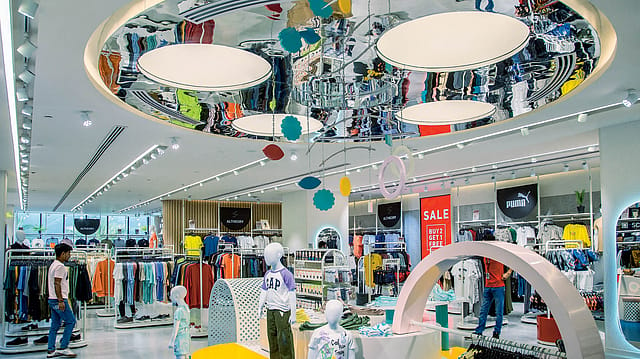Organised apparel retail sector to witness revenue boost on GST cut: Crisil
ADVERTISEMENT

GST cut will boost the revenues of organized apparerel retail sector in the current financial year, said Crisil Ratings in a press release.
“The recent goods and services tax (GST) rationalisation will add about 200 basis points (bps) to revenue growth of India’s organised apparel retail sector this fiscal, keeping it steady at 13-14% for the second consecutive fiscal,” Crisil Ratings said.
The GST council reduced rate on readymade garments priced below ₹2,500/piece (earlier ₹1,000). Government aimed at making affordable apparel cheaper, particularly for middle-class and low-income households. “The tax cut will revive demand in tier-2/3 towns and rural markets, and support employment, especially for women in stitching, tailoring, and finishing units and Make in India initiative,” government said after the GST Council decision last month.
Crisil points out that GST rate cut on apparel priced below ₹2,500 is likely to lift demand in the mid-premium segment, while the fast fashion/value segment will continue to drive the momentum. “The GST relief, though limited, provides timely support to sustain growth. The uniform 5% GST rate―versus the previous dual structure of 5% below ₹1,000 and 12% between ₹1,000 and ₹2,500―has widened the consumption base,” it said.
November 2025
The annual Fortune India special issue of India’s Best CEOs celebrates leaders who have transformed their businesses while navigating an uncertain environment, leading from the front.
“Conversely, the increase in the GST rate on apparel priced above Rs 2,500 from 12% to 18% has weighed on premium categories, including wedding wear, woollens, handlooms and embroidered clothing. The premium segment accounts for about 35% of organised apparel sales,” it said.
Crisil analysed 40 organised apparel retailers, accounting for a third of the sector’s revenue. “Extending the 5% GST slab to apparel priced up to ₹2,500 boosts price competitiveness across the fast-fashion/value and mid-premium segments, whose customers are price-sensitive,” said Anuj Sethi, Senior Director, Crisil Ratings.
“With the timing of the GST rate cut coinciding with the festive season, demand should increase as middle-class spending picks up. Moreover, benign inflation, easing food cost and faster fashion-refresh cycles will help retailers gain a modest share-of-wallet advantage in discretionary categories, leading to sustained sectoral revenue growth of 13-14% this fiscal,” Sethi added.
“With the fast-fashion/value and mid-premium apparel (largely priced below ₹2,500) segments accounting for almost 65% of the sector’s revenue, stronger traction in these price bands will likely offset muted growth in the higher-priced apparel segment,” the Crisil release added.
“This development is notable especially following six consecutive quarters of moderate growth, despite festive seasons and prolonged discounts to boost revenue. Easing inflation and GST reduction will enhance affordability, which would otherwise have remained sluggish,” it said.
“Apparel retailers with a higher share of premium sales may choose to absorb part of the GST hike to sustain demand during the ongoing festive and wedding season, when buying activity is buoyant. However, lower cotton prices and the reduction of GST on synthetic fibres and yarn, from 18% and 12% to a uniform 5%, will ease input cost,” said Poonam Upadhyay, Director, Crisil Ratings.
“As a result, given raw materials account for almost two thirds of production cost, the sector’s operating margin is expected to inch up to 14.0-14.5% this fiscal from 14% last fiscal, even as marketing spending remains elevated amid intense competition across both the value and mid-premium segments,” Upadhyay added.
Crisil noted that the GST revisions align with India's evolving consumption dynamics, which are driven by rising middle-class incomes, urbanisation, and a visible shift towards affordable, fashion-forward clothing.
“As discretionary spending remains sensitive to inflation and employment trends, a resurgence in pricing pressures or a moderation in wage growth could test the sector’s demand momentum. Hence, consumer sentiment bears watching,” Crisil said.
